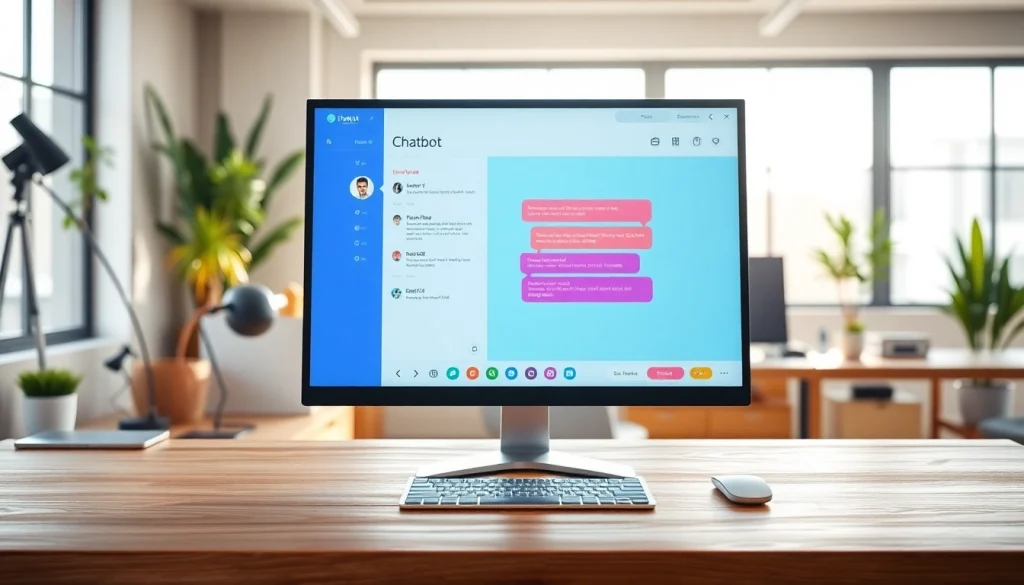Understanding the Role of a Chatbot for Website
Defining Chatbots: What They Are and How They Work
Chatbots are artificial intelligence (AI) programs designed to simulate conversation with human users, particularly over the internet. These tools operate through text, voice, or both, offering responses to user inquiries in a conversational manner. At their core, chatbots are powered by algorithms that leverage natural language processing (NLP) to interpret user inputs and generate appropriate responses. They can range from simple rule-based bots that follow preset patterns to sophisticated AI-driven systems capable of learning and adapting their responses through machine learning.
The Impact of Chatbots on Consumer Engagement
In today’s digital landscape, maintaining consumer engagement is crucial for businesses. Chatbots have revolutionized how organizations interact with their customers by providing instantaneous responses and support 24/7. This constant availability not only enhances customer satisfaction but also builds trust and loyalty. With data showcasing that over 60% of consumers prefer to communicate with businesses via chat rather than phone calls, the importance of integrating a chatbot for website interactions is apparent.
Identifying the Right Use Cases for Your Website
To maximize the effectiveness of a chatbot, businesses must identify suitable use cases that align with their objectives and customer needs. Common applications include customer support, lead generation, e-commerce assistance, and content delivery. By assessing the specific pain points of customers and potential areas for automation, companies can tailor their chatbots to fulfill these roles effectively.
Key Benefits of Implementing a Chatbot for Website
Improving Customer Service and Response Efficiency
One of the most significant advantages of implementing a chatbot on your website is the enhancement of customer service. Chatbots provide swift replies to customer inquiries, often resolving issues before they escalate. By automating responses to frequently asked questions, details regarding products or services, and simple troubleshooting, businesses can decrease wait times and free up human agents to tackle more complex issues.
Boosting Lead Generation and Conversion Rates
Chatbots play a pivotal role in lead generation by engaging visitors as soon as they land on your site. By utilizing targeted questions and conversational prompts, chatbots can gather valuable information about potential customers and lead them down the sales funnel. Studies reveal that websites with chatbots experience a conversion rate increase of up to 45%, demonstrating their effectiveness in converting inquiries into sales.
Reducing Operational Costs Through Automation
Automating routine tasks with chatbots can lead to substantial cost savings. Businesses can reduce the need for extensive customer service teams, allowing them to allocate resources more efficiently. By handling a bulk of the inquiries without human intervention, organizations can streamline their operations, ultimately resulting in a higher return on investment (ROI) for their chat solutions.
Choosing the Right Chatbot for Your Website
Evaluating Features and Functionalities
When selecting a chatbot for your website, it is crucial to evaluate the range of features and functionalities available. Look for chatbots that can deliver personalized interactions, integrate with existing systems (e.g., CRM and emailing platforms), and provide analytics for performance tracking. Additionally, consider whether the chatbot can handle multiple languages, as this can enhance accessibility for a broader audience.
Assessing Integration with Existing Systems
Seamless integration with existing business systems enhances operational efficiency. Before choosing a chatbot, assess how well it integrates with your website’s content management system (CMS), customer relationship management (CRM) tools, and other marketing automation platforms. Proper integration allows for streamlined workflows and comprehensive tracking of customer interactions.
Understanding Pricing Models and ROI Considerations
The pricing models for chatbots can vary widely, including subscription-based models, pay-per-use, or one-time licensing fees. Businesses must understand their budget constraints and assess the potential ROI of chatbot implementation. Consider factors like decreased customer service costs and increased sales through automated engagement when calculating ROI.
Best Practices for Chatbot Implementation on Your Website
Creating User-Friendly Scenarios and Dialogues
For a chatbot to be effective, crafting user-friendly scenarios and dialogues is essential. Focus on creating natural conversations that resonate with users. Conduct user testing to ensure that the chatbot addresses common queries and routes conversations logically. Maintaining a friendly tone while being informative will enhance user satisfaction and encourage continued interaction.
Testing and Iterating for Improved Performance
Once implemented, chatbots should undergo regular testing and iteration to refine their performance. Gather data on user interactions, feedback, and trigger responses to identify pain points and areas for improvement. Continuous optimization ensures that the chatbot evolves based on user behavior and preferences, ensuring ongoing relevance and effectiveness.
Measuring Success with Key Performance Indicators (KPIs)
Establishing key performance indicators (KPIs) is crucial for measuring the success of your chatbot. KPIs might include metrics such as user engagement rates, customer satisfaction scores, resolution time for inquiries, and conversion rates. Regularly analyze these metrics to gauge effectiveness and make data-driven decisions to enhance the chatbot’s functionality.
Future Trends in Chatbot Technology for Websites
The Role of AI and Machine Learning in Chatbots
As chatbot technology progresses, the integration of AI and machine learning will increasingly enhance the capabilities of these tools. Advanced algorithms will enable chatbots to better understand context, emotions, and user intent, leading to more human-like conversations. The utilization of predictive analytics will allow chatbots to anticipate user needs, further fostering engagement and satisfaction.
Personalizing User Experiences Through Advanced Analytics
Personalization is becoming a foundational component of the online customer experience. By leveraging advanced analytics, chatbots can tailor their interactions based on user behavior, demographic information, and preferences. This individualized approach not only improves user engagement but also increases the likelihood of conversion as customers feel more connected to personalized recommendations and solutions.
Integrating Chatbots with Multi-Channel Strategies
The future of chatbot technologies lies within their capacity to integrate with multi-channel strategies. As businesses operate across various platforms—including social media, mobile, and email—there’s a growing need for chatbots to function cohesively within an omnichannel framework. This integration ensures a seamless customer experience, allowing for continued engagement regardless of the platform used to communicate.
